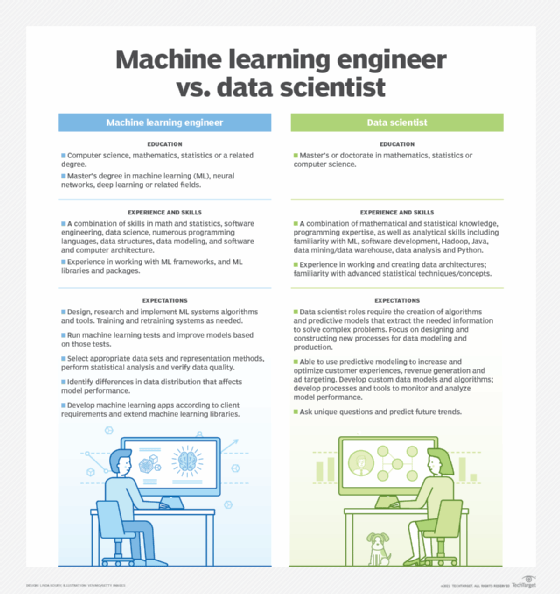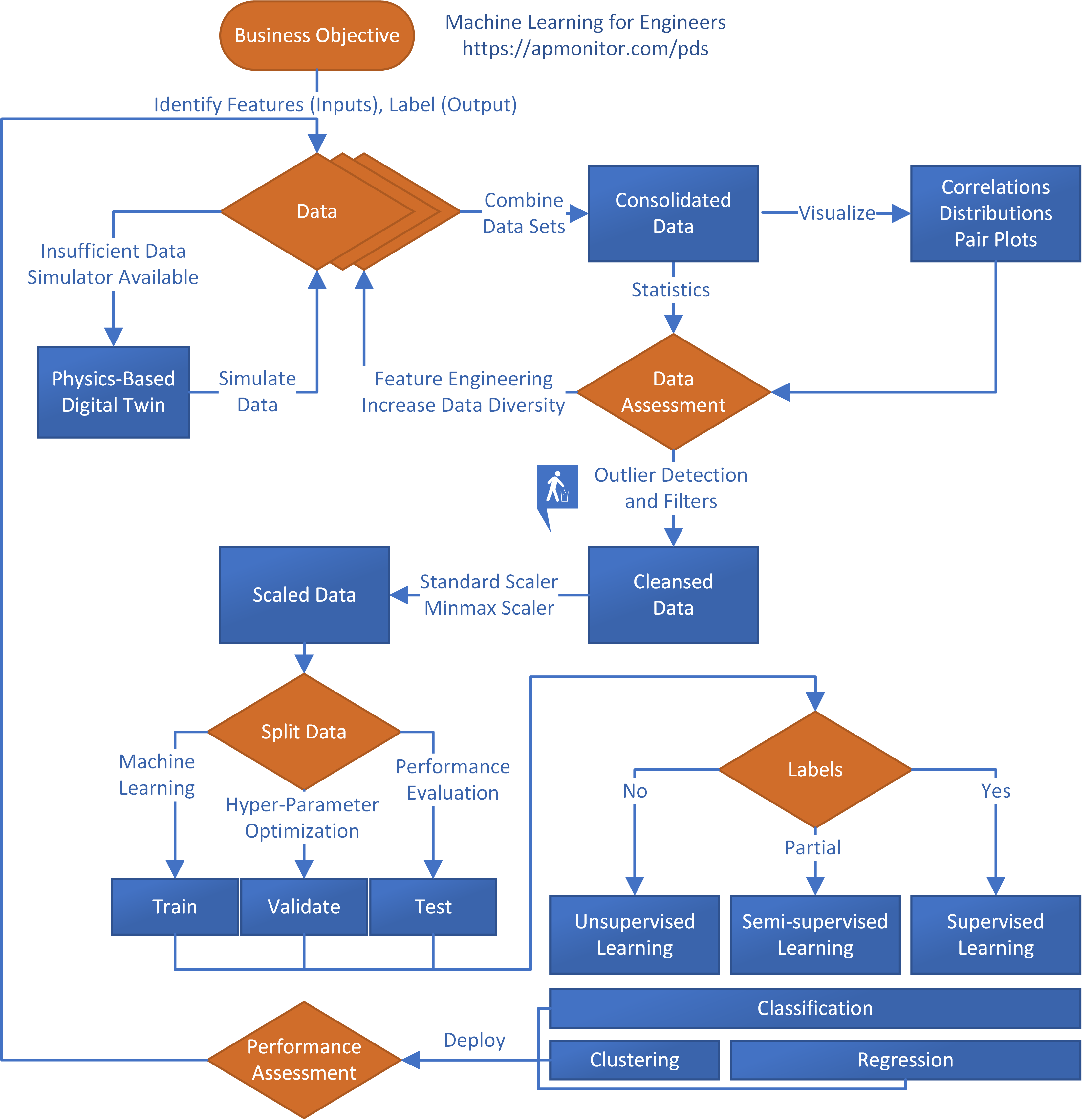All Categories
Featured
Table of Contents
- – Excitement About Machine Learning Engineer Course
- – Online Machine Learning Engineering & Ai Bootc...
- – Getting The Best Online Software Engineering ...
- – What Is The Best Route Of Becoming An Ai Engi...
- – An Unbiased View of Machine Learning For Dev...
- – 4 Simple Techniques For How Long Does It Tak...
You probably know Santiago from his Twitter. On Twitter, each day, he shares a whole lot of functional features of device discovering. Thanks, Santiago, for joining us today. Welcome. (2:39) Santiago: Thanks for welcoming me. (3:16) Alexey: Prior to we enter into our primary subject of moving from software engineering to maker understanding, possibly we can start with your background.
I went to college, got a computer system science level, and I began building software. Back after that, I had no concept concerning equipment discovering.
I know you have actually been making use of the term "transitioning from software application design to maker discovering". I like the term "adding to my capability the artificial intelligence skills" much more because I assume if you're a software engineer, you are already supplying a great deal of value. By integrating maker understanding currently, you're boosting the effect that you can have on the sector.
To ensure that's what I would certainly do. Alexey: This returns to one of your tweets or perhaps it was from your course when you compare two techniques to discovering. One technique is the issue based approach, which you simply spoke about. You locate a problem. In this case, it was some problem from Kaggle concerning this Titanic dataset, and you just discover just how to fix this trouble making use of a particular device, like decision trees from SciKit Learn.
Excitement About Machine Learning Engineer Course
You first discover math, or direct algebra, calculus. When you understand the mathematics, you go to machine discovering concept and you find out the theory. After that four years later, you finally involve applications, "Okay, just how do I utilize all these 4 years of mathematics to fix this Titanic issue?" ? In the former, you kind of conserve yourself some time, I think.
If I have an electric outlet right here that I need replacing, I don't intend to most likely to college, spend four years recognizing the mathematics behind electricity and the physics and all of that, just to transform an electrical outlet. I prefer to begin with the outlet and discover a YouTube video that assists me experience the issue.
Santiago: I truly like the concept of beginning with a problem, trying to toss out what I know up to that issue and comprehend why it doesn't function. Grab the devices that I need to resolve that issue and start excavating much deeper and deeper and deeper from that factor on.
So that's what I normally advise. Alexey: Possibly we can chat a bit about learning resources. You discussed in Kaggle there is an intro tutorial, where you can obtain and find out just how to make decision trees. At the beginning, before we began this interview, you stated a pair of books.
The only requirement for that course is that you recognize a little bit of Python. If you're a developer, that's an excellent starting point. (38:48) Santiago: If you're not a programmer, after that I do have a pin on my Twitter account. If you go to my account, the tweet that's going to get on the top, the one that claims "pinned tweet".
Online Machine Learning Engineering & Ai Bootcamp Fundamentals Explained

Also if you're not a programmer, you can begin with Python and work your way to even more equipment understanding. This roadmap is concentrated on Coursera, which is a system that I actually, truly like. You can investigate all of the programs for free or you can pay for the Coursera subscription to obtain certificates if you intend to.
To ensure that's what I would do. Alexey: This comes back to among your tweets or maybe it was from your course when you contrast 2 techniques to knowing. One technique is the problem based strategy, which you just spoke about. You discover a problem. In this situation, it was some trouble from Kaggle regarding this Titanic dataset, and you simply find out exactly how to fix this issue making use of a certain tool, like choice trees from SciKit Learn.

You initially find out math, or direct algebra, calculus. When you understand the math, you go to equipment learning theory and you find out the concept.
If I have an electric outlet below that I require changing, I don't intend to go to college, invest 4 years recognizing the math behind power and the physics and all of that, just to alter an outlet. I prefer to begin with the electrical outlet and discover a YouTube video clip that aids me undergo the issue.
Santiago: I really like the concept of beginning with a trouble, attempting to toss out what I recognize up to that problem and recognize why it does not function. Get the tools that I require to fix that problem and start excavating deeper and deeper and deeper from that factor on.
Alexey: Possibly we can chat a bit concerning discovering resources. You stated in Kaggle there is an intro tutorial, where you can obtain and learn how to make choice trees.
Getting The Best Online Software Engineering Courses And Programs To Work
The only requirement for that program is that you know a little bit of Python. If you go to my profile, the tweet that's going to be on the top, the one that says "pinned tweet".
Even if you're not a developer, you can begin with Python and function your means to even more artificial intelligence. This roadmap is focused on Coursera, which is a system that I truly, actually like. You can investigate every one of the programs totally free or you can spend for the Coursera membership to get certificates if you want to.
What Is The Best Route Of Becoming An Ai Engineer? - Questions
Alexey: This comes back to one of your tweets or maybe it was from your program when you compare two approaches to understanding. In this situation, it was some trouble from Kaggle regarding this Titanic dataset, and you simply find out just how to address this issue making use of a details tool, like choice trees from SciKit Learn.

You initially discover mathematics, or direct algebra, calculus. When you understand the math, you go to maker discovering theory and you find out the concept.
If I have an electric outlet below that I need replacing, I don't want to go to college, spend four years comprehending the mathematics behind electrical energy and the physics and all of that, simply to transform an outlet. I would instead start with the electrical outlet and discover a YouTube video that aids me experience the issue.
Santiago: I truly like the idea of starting with a trouble, attempting to throw out what I recognize up to that issue and comprehend why it does not work. Order the tools that I need to resolve that issue and start digging much deeper and much deeper and much deeper from that point on.
That's what I generally advise. Alexey: Maybe we can talk a bit about discovering sources. You pointed out in Kaggle there is an introduction tutorial, where you can obtain and discover exactly how to choose trees. At the beginning, prior to we began this meeting, you pointed out a number of publications also.
An Unbiased View of Machine Learning For Developers
The only requirement for that course is that you understand a little bit of Python. If you're a developer, that's a fantastic starting point. (38:48) Santiago: If you're not a developer, then I do have a pin on my Twitter account. If you go to my profile, the tweet that's going to get on the top, the one that says "pinned tweet".
Also if you're not a programmer, you can begin with Python and work your way to even more equipment discovering. This roadmap is concentrated on Coursera, which is a system that I truly, really like. You can audit every one of the programs free of cost or you can spend for the Coursera subscription to obtain certificates if you want to.
Alexey: This comes back to one of your tweets or perhaps it was from your training course when you contrast two strategies to learning. In this situation, it was some problem from Kaggle about this Titanic dataset, and you simply discover how to solve this issue making use of a particular device, like choice trees from SciKit Learn.
You initially discover mathematics, or direct algebra, calculus. When you understand the mathematics, you go to equipment learning theory and you discover the concept. After that 4 years later on, you ultimately come to applications, "Okay, just how do I use all these four years of mathematics to fix this Titanic issue?" ? So in the former, you kind of conserve yourself a long time, I believe.
4 Simple Techniques For How Long Does It Take To Learn “Machine Learning” From A ...
If I have an electrical outlet here that I need changing, I don't desire to most likely to college, invest 4 years comprehending the mathematics behind electrical power and the physics and all of that, simply to transform an outlet. I would instead begin with the electrical outlet and find a YouTube video clip that aids me go through the problem.
Santiago: I truly like the concept of starting with an issue, attempting to toss out what I recognize up to that issue and understand why it does not function. Get hold of the devices that I require to address that trouble and begin excavating deeper and much deeper and deeper from that point on.

Alexey: Possibly we can speak a bit about finding out sources. You mentioned in Kaggle there is an intro tutorial, where you can obtain and discover how to make decision trees.
The only need for that training course is that you recognize a little bit of Python. If you go to my profile, the tweet that's going to be on the top, the one that claims "pinned tweet".
Even if you're not a programmer, you can start with Python and work your method to even more artificial intelligence. This roadmap is concentrated on Coursera, which is a system that I truly, actually like. You can investigate every one of the programs completely free or you can spend for the Coursera registration to obtain certifications if you wish to.
Table of Contents
- – Excitement About Machine Learning Engineer Course
- – Online Machine Learning Engineering & Ai Bootc...
- – Getting The Best Online Software Engineering ...
- – What Is The Best Route Of Becoming An Ai Engi...
- – An Unbiased View of Machine Learning For Dev...
- – 4 Simple Techniques For How Long Does It Tak...
Latest Posts
The Ultimate Guide To Data Science Interview Preparation
10 Behavioral Interview Questions Every Software Engineer Should Prepare For
How To Negotiate A Software Engineer Salary After A Faang Offer
More
Latest Posts
The Ultimate Guide To Data Science Interview Preparation
10 Behavioral Interview Questions Every Software Engineer Should Prepare For
How To Negotiate A Software Engineer Salary After A Faang Offer